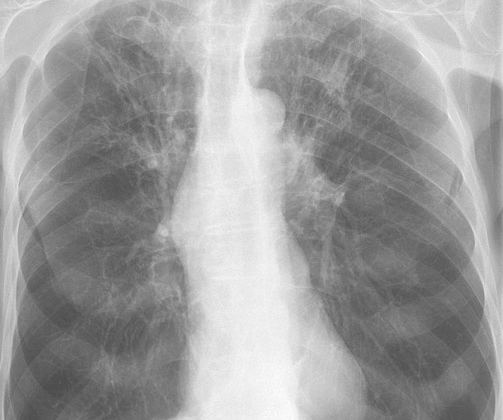COPD Awareness Month is an opportunity for individuals, healthcare professionals, and organizations to come together to educate the public about this chronic respiratory condition, advocate for better care, and support those affected. With millions of people worldwide living with COPD—many undiagnosed or under-treated—this month emphasizes the importance of early detection, prevention, and effective management.
What is COPD?
COPD, or Chronic Obstructive Pulmonary Disease, is a progressive lung disease that makes it hard to breathe. It encompasses two main conditions:
- Chronic Bronchitis: Inflammation of the lining of the bronchial tubes, which carry air to and from the lungs. It leads to coughing and mucus production.
- Emphysema: Damage to the air sacs (alveoli) in the lungs, which impairs the exchange of oxygen and carbon dioxide.
COPD often develops slowly and worsens over time, significantly impacting quality of life.
Causes and Risk Factors
1. Smoking
The leading cause of COPD is long-term cigarette smoking. Pipe, cigar, and other types of tobacco smoking can also contribute.
2. Environmental Factors
- Long-term exposure to air pollution
- Chemical fumes and dust in workplaces
- Secondhand smoke
3. Genetic Factors
A rare genetic condition called Alpha-1 Antitrypsin Deficiency can also cause COPD, even in people who have never smoked.
Symptoms of COPD
Symptoms often begin subtly and progress gradually, which may delay diagnosis.
- Chronic cough
- Shortness of breath, especially during physical activities
- Wheezing
- Chest tightness
- Excess mucus production
- Frequent respiratory infections
- Fatigue
As the disease progresses, symptoms become more severe, and everyday tasks may become increasingly difficult.
Diagnosis of COPD
Early diagnosis is essential for effective management. Healthcare providers may use several tools:
- Medical History and Physical Exam
- Spirometry: A simple breathing test that measures how much air a person can inhale and exhale.
- Chest X-rays or CT Scans: To identify lung damage.
- Arterial Blood Gas Analysis: To assess oxygen and carbon dioxide levels in the blood.
Stages of COPD
COPD is categorized into four stages based on severity:
- Mild (Stage 1): Minimal symptoms; slight airflow limitation.
- Moderate (Stage 2): Increasing breathlessness; reduced activity tolerance.
- Severe (Stage 3): Persistent symptoms; frequent exacerbations.
- Very Severe (Stage 4): Severely limited airflow; life-threatening complications.
Treatment and Management
While there is no cure for COPD, treatment can alleviate symptoms, improve quality of life, and slow disease progression.
1. Lifestyle Changes
- Quitting Smoking: The most critical step.
- Avoiding Lung Irritants: Reducing exposure to pollutants and allergens.
- Regular Exercise: Helps maintain lung function and overall fitness.
2. Medications
- Bronchodilators: Relax airway muscles.
- Inhaled Corticosteroids: Reduce inflammation.
- Combination Inhalers: Contain both bronchodilators and corticosteroids.
- Antibiotics: To treat respiratory infections.
3. Pulmonary Rehabilitation
A comprehensive program that includes:
- Exercise training
- Nutrition counseling
- Education and support
4. Oxygen Therapy
For patients with low blood oxygen levels.
5. Surgery
In severe cases, options may include:
- Lung volume reduction surgery
- Lung transplantation
Living with COPD
Managing COPD involves more than just medication. Patients are encouraged to:
- Follow a personalized action plan
- Monitor symptoms and recognize flare-ups
- Eat a balanced diet
- Get vaccinated (e.g., flu and pneumonia vaccines)
- Stay mentally and emotionally well
Support groups and counseling can also be valuable for coping with chronic illness.
Importance of COPD Awareness Month Education
1. Early Detection Saves Lives
Many people are unaware they have COPD until the disease is advanced. Awareness campaigns promote early screening, especially for high-risk groups.
2. Reducing Stigma
COPD is often stigmatized due to its association with smoking. Awareness initiatives aim to foster empathy and understanding.
3. Advocacy for Better Policies
COPD Awareness Month also pushes for improved healthcare access, more research funding, and stronger anti-smoking laws.
4. Community Engagement
Events, webinars, and health fairs during November encourage community involvement and education.
How to Get Involved in COPD Awareness Month
- Share educational materials on social media using hashtags like #COPDAwareness
- Participate in local or virtual awareness events
- Donate to organizations supporting COPD research
- Encourage loved ones at risk to get screened
- Support clean air initiatives in your community
Conclusion
COPD Awareness Month is a call to action—to learn, share, and support. By increasing public understanding, promoting early diagnosis, and encouraging proactive management, we can help those living with COPD lead fuller, healthier lives. Through continued advocacy, research, and compassion, we can create a world where fewer people suffer from this debilitating condition.
If you or someone you know is experiencing symptoms of COPD, consult a healthcare provider for evaluation and guidance. Remember, awareness is the first step toward better lung health.












